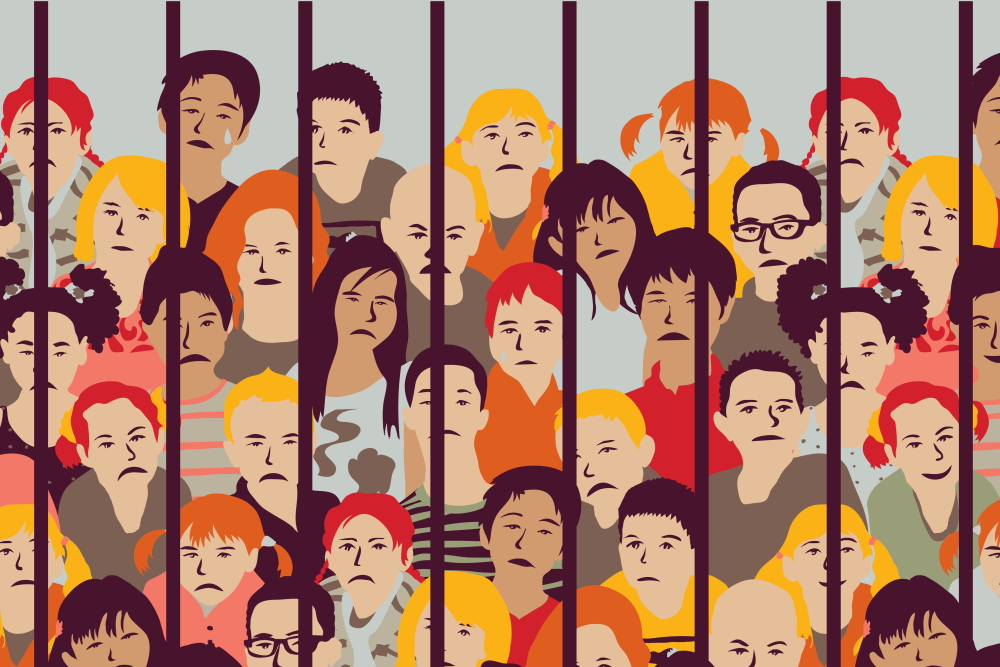I first met Mariah two years ago, when I worked as a youth advocate in the Harris County Advocate Program (H-CAP) in Houston. Mariah, 14, was on probation for breaking a classmate’s nose. She was a thin girl whose clothing often reflected the urban, pop-culture uniform of her generation: skinny jeans, slightly sagged of course, and colorful sneakers.
Mariah’s father had passed away, and her mother was battling cancer at the time. The teen shared a two-bedroom home with her mother, two brothers, two sisters and a niece.
Mariah and I used to meet a few times a week to talk about her behavioral and academic progress. I tried to expand her mind by taking her to the Buffalo Soldier Museum and having her complete various writing assignments related to major historical events. Sometimes, we would simply go to the nearest fast-food place and talk.
 No matter how much time I spent with her, neither my training nor the advocacy program was what she needed.
No matter how much time I spent with her, neither my training nor the advocacy program was what she needed.
The goal of programs like H-CAP is to reduce the chances of juvenile repeat offenders by providing court-ordered classes and supervised extracurricular activities during their probationary period.
To prepare to become a youth advocate, I participated in mandatory monthly training sessions intended to give me the basic tools to better connect with my responsibilities, yet it failed to prepare me for crises.
As an advocate, I was responsible for four youths (other advocates had up to seven) and spent no more than 25 total hours a week with them (which would later get cut to 15 hours because of lack of funding).
Before joining H-CAP, I looked forward to bonding with troubled youth and hoped to become a role model for each of them. But I quickly learned this vision would be nearly impossible to achieve when my visits consisted of picking up each kid, attempting to talk to them in the car on the way to an activity then dropping them all off. Those visits only allowed me to have about 15 minutes with one of my kids; since they all lived pretty far from each other, I had to base my route on gas efficiency.
The aim was to spend time with juvenile offenders by monitoring educational and recreational activities (library, museum, etc.), facilitating weekly visits with their probation officers and engaging with their families.
Throughout those four months, Mariah continued to fight her classmates and use marijuana. She wasn’t getting what she needed to effectively change her behavior.
Mariah had to check in with her probation officer every week, which consisted of random drug tests and life updates. She also had to abide by a daily curfew of 9 p.m. and participate in H-CAP.
I was required to take my kids to classes offered by H-CAP, but they were inadequate and did not give Mariah the necessary tools for rehabilitation.
The so-called anti-gang class involved lectures by a police officer. The officer’s condescension was unnecessary and it definitely turned off my kids. There was never any conversation about why gangs are bad or any discussion about the repercussions of joining such a group. The life skills class provided basic tools on how to control anger but never mentioned or addressed the roots of each kid’s problems.
These classes were irrelevant to my kids as none of them wanted to join a gang and many of their issues started at home.
Fortunately, Mariah and I got a chance to spend one-on-one time together toward the end of her four-month time period with H-CAP. I found she was more talkative and confided in me more when we were alone. Our discussions often revealed that she longed for her own space, mainly to listen to music and to draw.
H-CAP puts a lot of time and effort into trying to help young people who commit misdemeanors and more violent crimes. Yet, there is evidence that the approach of this — and other comparable state programs — are not accomplishing the desired goals.
According to a 2013 report released by the Texas Legislative Budget Board, the recidivism rate among juveniles 10 to 17 years old is more than 50 percent.
The Texas Juvenile Justice Department is designed to serve a large array of juveniles of different ages, ethnicities and socioeconomic backgrounds with the ultimate goal of keeping them from entering the adult prison system. While the department’s goal is rehabilitation, the system is failing to recognize and fix specific issues plaguing youth.
I often felt inadequate when visiting Mariah’s family. I was unable to answer many questions about her treatment, as I was unfamiliar with some of the professional lingo, and could not offer advice.
This left me wondering if I was right for the job.
In order to effectively rehabilitate juvenile offenders, a licensed professional would have been more suited to work with them during their probation, in order to find and treat the root cause.
I spoke with one such professional who has found some success in aiding the rehabilitation of youthful offenders. Michelle Panzarella, a social worker and licensed therapist for children and adolescents with TGIF Counseling in Alpharetta, Ga., says many of her clients have found jobs, stayed in school, graduated from high school, and are no longer being arrested.
“I attempt to prevent or reduce juvenile offending through strength-based individual and family counseling, as well as cognitive-behavioral techniques,” Panzarella said. “Finding recreational hobbies and establishing new friendships rather than using drugs and hanging out with substance-abusing people are a few ways to change habits.” Strengthening family relationships and communication is key as well, she said, as many juvenile offenders struggle with their parent-child relationship, particularly in adolescence.
Whereas H-CAP focuses on a rote rehabilitation strategy for each youth, a program in California takes a different approach by emphasizing individual assessment and treatment.
Stanford Youth Solutions’ Juvenile Justice and Crime Prevention Program in Sacramento, Calif., collaborates with probation officers and the youths’ families. They help families understand their role in helping their children to ultimately exit the juvenile justice system.
They offer up to 12 therapy sessions for youth and families called Functional Family Therapy (FFT). The sessions are delivered over three months with additional sessions for more challenging circumstances. This approach works in phases for each youth, by focusing on assessing the problem, establishing specific goals, outlining specific techniques of intervention and implementing skills necessary for success.
Fifty-three percent of youth in its programs are less likely to reoffend compared with other rates of 17 to 20 percent nationally.
While researching other programs, I found one that involves all facets of a youth’s life in order to improve quality of life.
One juvenile offender rehabilitation is 24/7
The Multisystemic Therapy (MST) is a Virginia-based intensive family- and community-based treatment program that focuses on addressing all areas of the youth’s life. They understand that each area (their families, schools and teachers, neighborhoods and friends) plays a crucial role and each requires attention when change is needed.
To achieve this, MST clinicians are on call 24 hours a day. They provide therapists to work intensively with parents to keep the youth focused on school and gaining job skills, and introduce the youth to recreational activities as an alternative to hanging out.
A 14-year follow-up study by the Missouri Delinquency Project showed youth who received MST had up to 54 percent fewer rearrests and up to 57 percent fewer days of incarceration.
Implementing the above measures could have made Mariah’s rehabilitation more successful and would decrease her chances of reoffending.
More government funding is needed to create a more efficient juvenile offender rehabilitation process. That will allow for fully trained professionals such as social workers and therapists to assess and efficiently treat juvenile offenders. It will also allow for current programs to expand their treatment model.
Data from the Harris County Juvenile Probation Department show the cost to house one youth offender is $209 per day. According to Dr. Noel Perez, founder and CEO of Bridging the Divide, an organization that helps low-income families and youth through education, counseling and mentorship, it’s more cost-efficient to target prevention before juvenile arrests. “To run an after-school program for 30 juveniles with athletic activities, computer classes, life skills, full staff and utilities would cost $1,000 per day, or about $33 per juvenile,” he said.
Increasing the amount of prevention programs will cost more money. Hiring therapists will force an increase in expenditures, as will shifting the approach to focus on personalized treatment plans. Considering the recidivism statistics resulting from our current system, I believe we owe it to ourselves to pay more for prevention now, if we ever hope to spend less on punishment.
Alyssa Rachelle has worked with and volunteered for organizations that help troubled and juvenile offenders for several years. She was a youth advocate at the Harris County (Texas) Advocate Program.
